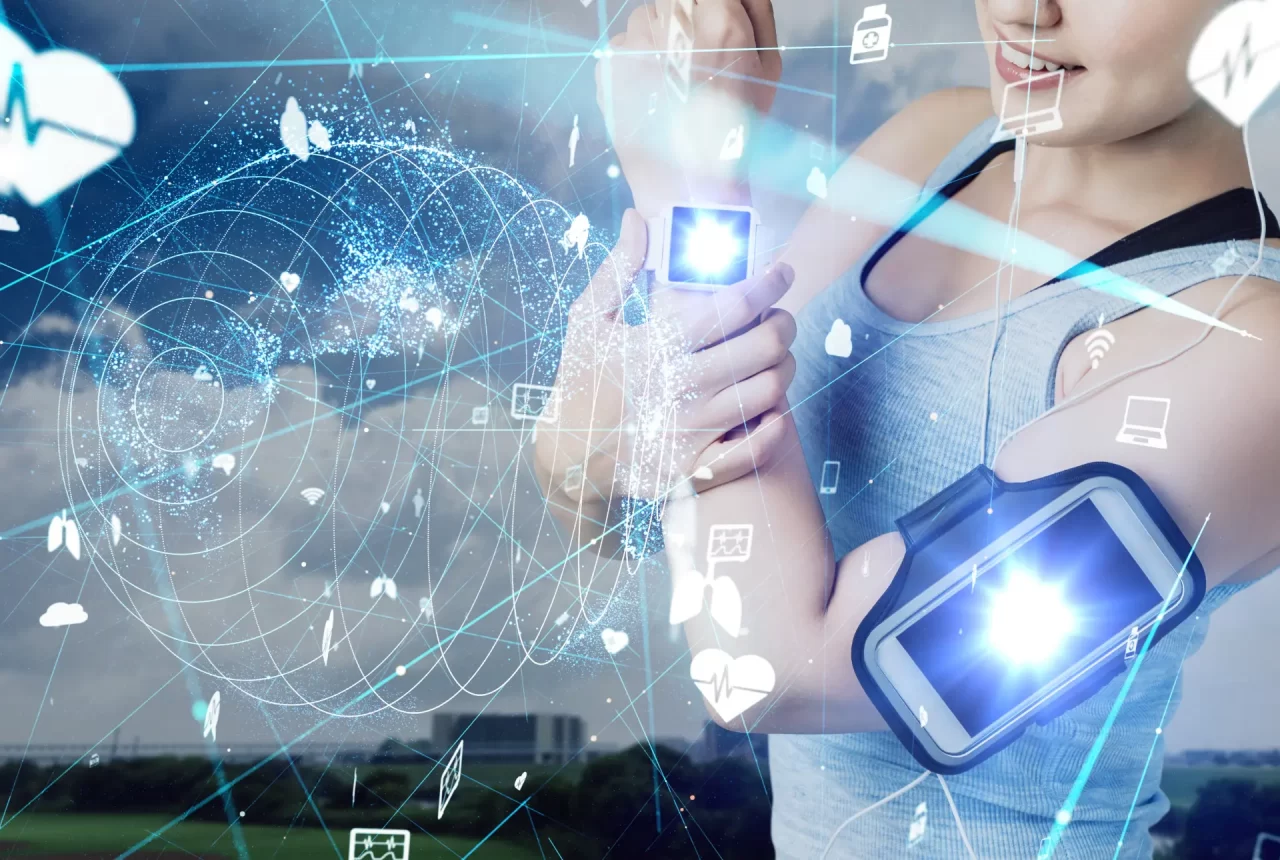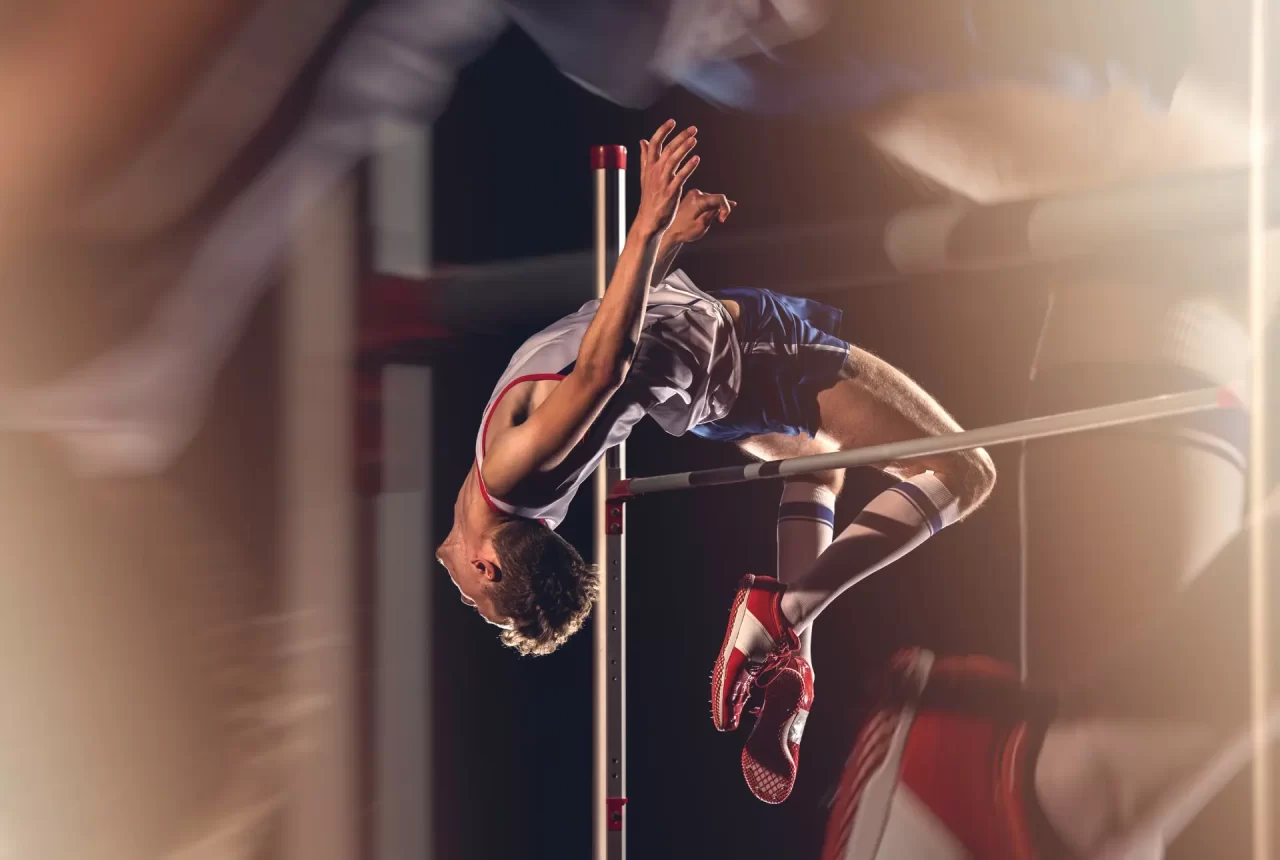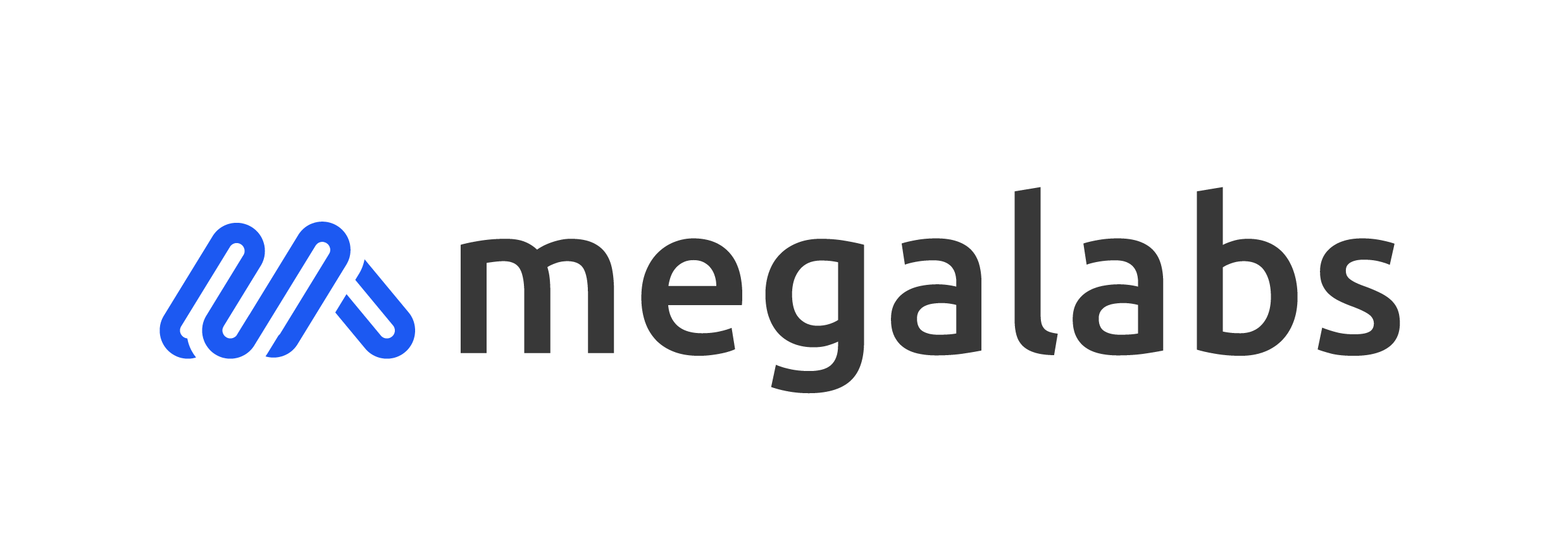The sports industry has changed immensely in recent years, especially after integrating technology into almost every aspect of sport. And now, the world of sports is witnessing a revolutionary change as artificial intelligence (AI) is playing an increasingly important role, especially in training methods. From performance analysis to injury prevention, the usage of AI in sports training is changing the way athletes and coaches approach performance and performance analysis.
The importance of technology in modern sports training cannot be underestimated. Today’s sportsmen and coaches are constantly looking for new ways to gain a competitive advantage, and technology has become an indispensable tool for achieving peak performance. Sports professionals can access valuable information, make data-driven decisions, and tailor their training programs to the unique needs of each athlete by leveraging the power of AI.
Although the usage of AI in sports is increasing and the developments show us only the tip of the iceberg, AI in the sports market is projected to reach a value of more than 19 billion dollars by 2030.
So, in this article, we will talk about this huge market. First, we will discuss how AI is being used and the benefits it brings to sports training. Then, we will look into some applications, such as performance analysis, injury prevention, and mental training. By examining the current state of AI in sports training, we aim to provide a comprehensive understanding of this exciting and rapidly evolving field.
AI Applications in Sports Training
Performance Analysis
We can say that one of the most common applications of AI in sports training is performance analysis. Sports coaches and conditioning specialists oftentimes focus on performance improvement. For individual sports, especially for olympiad athletes, improving their performance even by 1 msec or 1 mm means earning a medal or going back home empty-handed.
So, AI-powered performance analysis algorithms help performance professionals develop strategies to enhance athletes’ skills. By leveraging the power of AI, sports professionals can transform raw data into actionable insights, leading to more effective training and better overall performance.

Video Analysis and Computer Vision for Technique Improvement
AI-powered video analysis and computer vision technologies are revolutionizing the way athletes and coaches analyze and improve their techniques. These advanced tools can automatically detect and track player movements, analyze biomechanics, and provide real-time feedback on several performance metrics.
For example, AI-driven software like Hudl and Wyscout enable coaches and athletes to review game footage, break down plays, and identify areas for improvement with unprecedented precision and efficiency.
In sports like swimming, computer vision technology can analyze an athlete’s stroke technique, body position, and timing to provide specific feedback on how to optimize their performance. Similarly, in sports such as golf and tennis, AI-powered video analysis can help athletes fine-tune their swing or serve mechanics, leading to more consistent and powerful shots.
Real-time Data Collection and Analysis for Decision-Making
The ability to collect data in real-time is a game-changing aspect of AI in sports training. Wearable devices, sensors and AI driven analytics provide athletes and coaches with real-time feedback on performance metrics, such as heart rate, speed and acceleration. This real time data allows athletes and coaches to make informed decisions during and after training allowing them to adjust and optimize their performance.
For example, in sports like cycling and running, AI-powered wearables like WHOOP and Garmin can monitor an athlete’s training load, recovery status, and other physiological markers, helping them optimize their training intensity and avoid overtraining.
In team sports like soccer and basketball, real-time player tracking systems like Catapult and STATSports enable coaches to monitor player performance, fatigue levels, and injury risk, allowing them to make data-driven decisions on player rotations and game strategies.
AI-powered analysis tools can help athletes and coaches understand their strengths and weaknesses more deeply. This can lead to better training programs and improved performance in their sport.
Injury Prevention and Rehabilitation
Injury prevention and rehabilitation are critical components of sports training, as they directly impact an athlete’s career. AI plays a significant role in these areas by providing predictive analytics for injury risk assessment and facilitating personalized recovery plans based on AI-generated insights.
Predictive Analytics for Injury Risk Assessment
Coaches and trainers may be able to identify athletes who are more likely to suffer an injury with the aid of AI-powered predictive analytics. So, they can take proactive measures to prevent injuries from occurring.
AI algorithms can generate risk profiles for individual athletes and provide recommendations on how to reduce the likelihood of injury by analyzing various factors such as training load, biomechanics, and previous injury history.
In sum, AI lets a coach know before a human would be able to tell him or her when his or her athlete is stretching themselves too far and when to stop before they get injured.
For example, companies like Kitman Labs and Zone7 offer AI-driven injury risk assessment tools that analyze vast amounts of data to identify patterns and correlations between specific variables and injury risk. These insights enable coaches and trainers to make data-driven decisions regarding training programs, load management, and recovery strategies to minimize the risk of injury and keep athletes at peak performance levels.

Personalized Recovery Plans Based on AI-Generated Insights
Recovering from an injury is a complex and individualized process, and AI can play a crucial role in creating personalized recovery plans tailored to each athlete’s unique needs. By analyzing data from wearable devices, medical records, and performance metrics, AI algorithms can provide insights into the most effective rehabilitation strategies for specific injuries and individual athletes.
For instance, AI-driven platforms like BridgeAthletic and Physimax offer customized rehabilitation programs based on data-driven insights, ensuring that athletes receive the most appropriate and effective treatment. These platforms can also monitor an athlete’s progress throughout their recovery, adjusting the program as needed to optimize the healing process and minimize the risk of re-injury.
By harnessing the power of AI in injury prevention and rehabilitation, sports professionals can significantly reduce the occurrence of injuries, ensure faster and more effective recovery, and ultimately, prolong the careers of athletes while maintaining their peak performance levels.
Fitness and Conditioning
Fitness and conditioning are important aspects of sports training because they prepare athletes for their physical challenges of competition while also maintaining their overall health and well-being. With the integration of AI, fitness and conditioning programs can be tailored to individual athletes, ensuring that they receive the most effective and personalized training possible. Additionally, AI can be used to monitor and adjust training loads, optimizing performance while minimizing the risk of injury.
AI-Driven Workout Plans Tailored to Individual Athletes
A significant advantage of using artificial intelligence in sports training is that it can develop tailored workout programs. These plans are designed to match the specific requirements, objectives, and skills of every athlete. By analyzing data from various sources, such as wearable devices, performance metrics, and personal preferences, AI algorithms can develop training programs that focus on specific areas of improvement and target individual weaknesses.
For example, AI-powered fitness platforms like Volt Athletics and TrainHeroic offer personalized workout plans based on an athlete’s sport, position, and performance goals. These platforms take into account factors such as an athlete’s training history, injury risk, and fatigue levels, ensuring that their training program is both effective and safe.
Monitoring and Adjusting Training Load for Optimal Performance
Managing a player’s training workload is crucial for top performance and reducing chances of overdoing it, which could lead to injuries. Artificial intelligence is helpful in this aspect as it can constantly keep an eye on a player’s workout details like heart rate, energy produced, and sensed effort, and alter the workout plan instantly based on these factors.
Platforms like Polar and Firstbeat utilize AI-driven analytics to track an athlete’s training load, recovery status, and overall fitness levels, providing valuable insights for coaches and athletes alike. By analyzing this data, coaches can make informed decisions regarding the intensity and volume of an athlete’s training, ensuring that they are adequately prepared for competition without overtaxing their bodies.
In conclusion, the integration of AI in fitness and conditioning has the potential to revolutionize the way athletes train, providing personalized workout plans and intelligent monitoring of training loads. Taking advantage of these artificial intelligence-powered insights, players can improve their performance, decrease chances of getting injured, and fully unleash their potential in their field.
Mental Training and Cognitive Skills Development
In addition to physical fitness and technical skills, mental training and cognitive skills development are essential components of sports training. Mental strength, focus, decision-making, and reaction time can significantly impact an athlete’s performance in high-pressure situations.
Artificial intelligence-driven tools and virtual reality (VR) as well as augmented reality (AR) tech are more and more used to improve these mental abilities, offering players an upper hand while playing on the field or court.
AI-Powered Tools for Enhancing Focus, Decision-Making, and Reaction Time
AI-driven technologies offer innovative ways to improve an athlete’s cognitive abilities, such as focus, decision-making, and reaction time. By analyzing performance data and using machine learning algorithms, AI-powered tools can identify patterns and provide personalized recommendations for cognitive skills development.
For example, Neuropeak Pro offers a brain performance training program that utilizes AI-driven neurofeedback to help athletes enhance their focus, decision-making, and stress management.
Virtual Reality (VR) and Augmented Reality (AR) for Immersive Training Experiences
The use of VR and AR technologies in sports training has opened up new possibilities for mental training and cognitive skills development. These immersive technologies provide athletes with realistic, game-like scenarios that challenge their mental abilities and decision-making skills, ultimately improving their performance in real-world situations.
For instance, companies like STRIVR and Rezzil offer VR-based training platforms that simulate game situations, allowing athletes to practice their decision-making, spatial awareness, and reaction time in a controlled environment. These platforms can also be used to train athletes in high-pressure scenarios, helping them develop mental resilience and coping strategies for real-life competitions.
In sports like football and basketball, AR technology can be used to overlay virtual elements onto the physical training environment, providing athletes with real-time feedback and guidance on their performance. For example, Solos offers AR smart glasses that provide athletes with real-time performance data, such as speed, distance, and heart rate, enabling them to make informed decisions during training and competition.
In summary, the integration of AI-powered tools and immersive technologies like VR and AR in mental training and cognitive skills development has the potential to significantly enhance an athlete’s performance. By incorporating these innovative solutions into their training programs, athletes can develop the mental strength and cognitive abilities required to excel in their chosen sport.
Benefits of AI in Sports Training
Incorporating AI technologies into sports training offers numerous advantages for athletes, coaches, and teams. These benefits span various aspects of training, including performance enhancement, injury risk reduction, personalized training, and competitive advantage.
Enhanced Performance
The number one reason professional athletes use AI is for training. The more personalized and enhanced the training techniques are, the more they benefit from AI.
AI can contribute to improved athletic performance in several ways:
- Assisting with technique and skill development through video analysis and biomechanics assessment.
- Facilitating data-driven decision-making for coaches and athletes, enabling informed adjustments to training programs and strategies.
Reduced Injury Risk
Integrating AI into sports training can help minimize the risk of injuries:
- Allowing for early detection and prevention of potential injuries through predictive analytics and risk assessment.
- Supporting faster and more effective rehabilitation by providing personalized recovery plans and monitoring progress.
Personalized Training
AI technologies enable the creation of training programs tailored to individual athletes:
- Developing customized training plans based on each athlete’s needs, goals, and abilities.
- Offering adaptive training programs that evolve with an athlete’s performance, ensuring continuous improvement and growth.
Ai has already been proven to show promising results in weight training, implying the possibility and efficacy of ai procedures in measuring achievement on weight training appliances and providing athletes with helpful suggestions.
Competitive Advantage
Leveraging AI in sports training can provide a competitive edge:
- Utilizing cutting-edge technology to stay ahead of the competition by optimizing training methods and strategies.
- Gaining insights and strategies that were previously inaccessible, empowering athletes and coaches to make better decisions and maximize performance.
In conclusion, the integration of AI in sports training presents a wide range of benefits that can significantly impact athletic performance, injury prevention, and overall training effectiveness. By embracing these innovative technologies, athletes and coaches can unlock new levels of success and achievement in their chosen sports.
Real-world Examples of AI in Sports Training
The use of artificial intelligence in sports training is becoming more popular, as many pro teams and players are utilizing AI tools to boost their abilities, minimize the hazard of injuries, and achieve an advantage against competitors.
Here are some case studies and success stories that demonstrate the impact of AI in sports training.
Case Study-1: Philadelphia 76ers and Zone7
The Philadelphia 76ers, an NBA team, partnered with Zone7, an AI-driven injury risk assessment platform, to analyze player data and predict potential injuries. By using AI to monitor players’ training loads, fatigue levels, and biomechanics, Zone7 helped the 76ers reduce injury rates and optimize player availability.
As a result, the team experienced a significant decrease in days lost due to injuries, contributing to improved overall performance. For example, in the 2019-20 season, the 76ers had the fewest games with injuries in the NBA. In the 2020/21 season, they missed the second fewest games due to injury.
Case Study-2: Toronto Blue Jays and Kinduct
The Toronto Blue Jays, an MLB team, collaborated with Kinduct, a sports performance and data management platform, to analyze player data and provide insights for individualized training programs. Kinduct’s AI-driven platform enabled the Blue Jays to monitor player performance, identify areas for improvement, and develop customized training plans.
This partnership contributed to the team’s overall success by optimizing player performance and reducing injury risk. The collaboration has been very successful, and the Blue Jays have seen a significant decrease in injuries since 2018.
Case Study-3: Formula-1 Cars
Each Formula-1 car is equipped with more than 150 data sensors that collect information ranging from the car’s speed and acceleration to the temperature of its tires and brakes. An AI algorithm is then used to analyze the data from the sensors and allows the coaches and drivers to devise better racing tactics.
The information can be used, for instance, to figure out the best tire pressure for a specific track condition or to locate the places where the car is losing downforce. The setup of the car or the driver’s approach can then be modified using this information.
Success Story-1: AI in Swimming Performance Analysis
Swim coaches and athletes have started using AI-powered video analysis tools, such as TritonWear and SwimPro, to track and analyze swimming performance. These tools use AI algorithms to assess factors like stroke rate, stroke length, and body position, providing real-time feedback and personalized recommendations for improvement.
As a result, swimmers’ technique has improved noticeably, which has led to faster times and better overall performance.
Success Story-2: AI in Golf Swing Analysis
Golfers have also benefited from AI-driven technologies, such as Arccos Caddie and V1 Sports, which provide in-depth swing analysis and personalized recommendations for improvement. These AI-powered tools analyze factors like clubhead speed, swing plane, and impact position, enabling golfers to identify and correct flaws in their technique. Golfers who have used these technologies have reported measurable improvements in their swing mechanics, resulting in increased accuracy and distance.
These real-world examples showcase the potential of AI in sports training, as professional teams and athletes across various sports have experienced measurable improvements in performance and injury prevention. By incorporating AI-driven technologies into their training programs, athletes and coaches can unlock new levels of success and achievement in their chosen sports.
Conclusion
The integration of AI in sports training has the potential to revolutionize the way athletes and coaches approach physical conditioning, mental training, and overall performance improvement. Through personalized training programs, enhanced injury prevention, and data-driven decision-making, AI-driven technologies are transforming the landscape of sports training and providing athletes with the tools to reach new heights in their chosen fields.
As demonstrated by the real-world examples and success stories, embracing AI technology can lead to significant benefits for athletes and coaches alike. By incorporating AI-driven tools and solutions into their training regimens, athletes can optimize their performance, minimize injury risk, and maximize their potential. Similarly, coaches can utilize AI-driven insights to make informed decisions, develop effective strategies, and cultivate a winning culture within their teams.
Looking ahead, the future of sports training is likely to witness even greater integration of AI technologies, opening up new possibilities for performance enhancement and injury prevention. As AI continues to advance, its impact on sports training will only grow, offering athletes and coaches unprecedented opportunities to excel in their sports and achieve their goals.
In conclusion, athletes and coaches who adopt AI technology now will be well-positioned to benefit from this cutting-edge innovation, ushering in a new era of sports training and performance optimization. Finally, AI has the potential to elevate not only athletes but ultimately the sports world.

